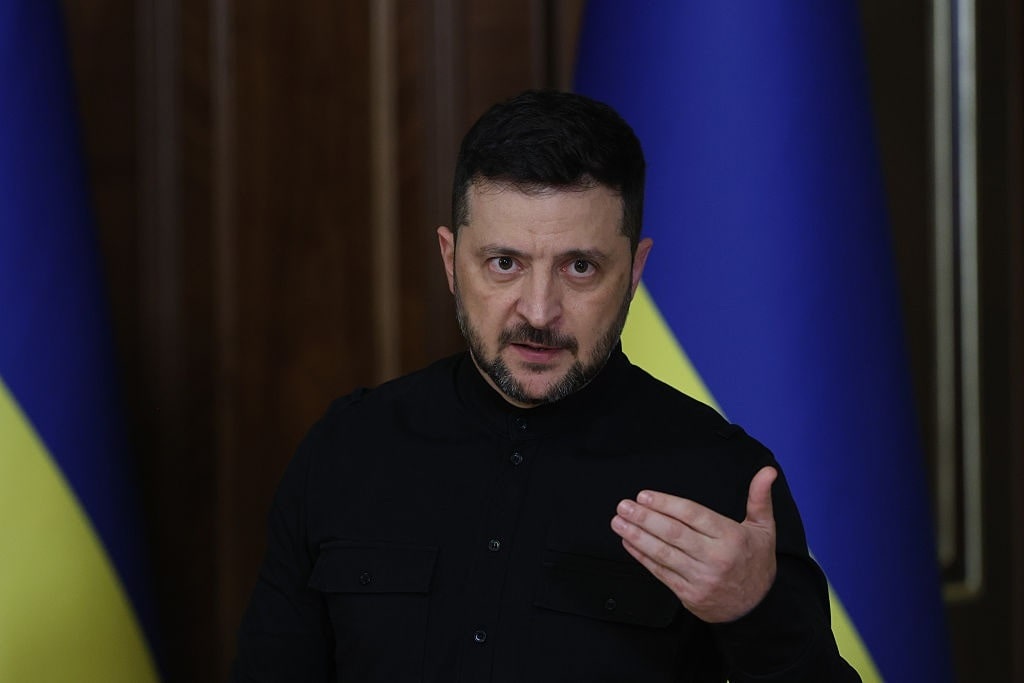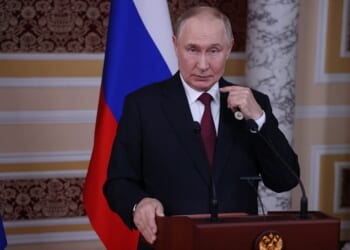
As the battle environment changes in Ukraine, longer-range weapons are needed.
Ukrainian President Volodymyr Zelensky is back at the White House on Friday, October 17. This time, according to reports, he will request longer-range weapons so that Ukrainian forces can strike deeper into Russia – an idea for which President Trump has shown support. The US leader believes such a capability would give Ukraine leverage to pressure Russian President Vladimir Putin into agreeing to a ceasefire.
Zelensky Will Have Much to Discuss
Volodymyr Zelensky has been a frequent visitor to the White House, sometimes to seek military support or to coordinate strategy for some version of a ceasefire in Ukraine. This time, one of the subjects will be to persuade the US president to provide Tomahawk Land Attack Missiles with conventional warheads (TLAM-C) cruise missiles to Ukraine. As it stands, for the US to provide the longer-range weapons may not require much persuasion. “Trump warned Moscow on Sunday that he was considering providing Ukraine with the long-range missiles if the war was not settled soon. The comments came after his call with Zelensky,” Just the News reported. While awaiting Zelensky’s arrival, the commander-in-chief took a phone call from Putin.
As has been the case with past phone calls with Putin, this conversation was cordial, and there was a sense of progress toward stopping the war in Ukraine. But we’ve seen this act before. After his conversation with the Russian leader, Trump posted on Truth Social:
“We also spent a great deal of time talking about Trade between Russia and the United States when the War with Ukraine is over. At the conclusion of the call, we agreed that there will be a meeting of our High-Level Advisors next week. The United States’ initial meetings will be led by Secretary of State Marco Rubio, together with various other people, to be designated. A meeting location is to be determined. President Putin and I will then meet in an agreed-upon location, Budapest, Hungary, to see if we can bring this ‘inglorious’ War between Russia and Ukraine to an end.”
Trump also explained in his post that he would discuss the call with President Zelensky when they meet. Perhaps the prospect of key locations in Russia being within range of TLAM-C missiles had a sobering impact on Putin.
Nonetheless, it appears that Trump has had his fill of Putin’s foot-dragging and is no longer in a mood to defer to the Russian leader. As Politico observed, “Trump has since abandoned his strategy of coddling Vladimir Putin to push Russia to the negotiating table.” One sure way of accomplishing this objective is to put Russian infrastructure, airfields, and weapons plants at greater risk. Currently, Ukraine has all of its territory – infrastructure, munitions plants, cities, and battlefield operations – subject to constant attacks from Russian ballistic and cruise missiles, long-range drones, and aerial bombardment from glide bombs. However, Kyiv must, because of the limited range of its missiles, focus on targets at distances only long-range drones can assault. Unfortunately, drones are slow and easily downed by Russian air defense capabilities.
Ukraine has been relying on the US-supplied Army Tactical Missile System (ATACMS), which has a range of about 180 miles, unlike the TLAM-C, which can reach much further. Current versions of the TLAM-C cruise missile have a range of over 1,500 miles and carry a 1,000-lb warhead. As Newsweek explained, “While the missile wouldn’t be a gamechanger in itself, particularly not in the small numbers the White House would likely send if it greenlights the transfer, Tomahawks would still add significantly to how well Kyiv could hit vital Russian assets far over the border.” One of those vital assets would be the oil refineries, pipeline stations, and power plants deeper inside Russia. Additionally, major military airfields have been heretofore out of range of ATACMS and other similar short-range missiles in Ukraine’s arsenal.
Critical Russian Targets in Range of TLAM-C
A crucial target inside Russia is the primary facility for producing Iranian-designed Shahed-136 drones – the Yelabuga drone factory – situated in the Alabuga Special Economic Zone near the city of Yelabuga. This site is about 800 miles east of the Ukraine-Russia border and well within the range of Tomahawk cruise missiles. The drone production facility is reported to have had an output of 5,700 drones by late 2024. Though there are other drone production sites, the Yelabuga facility is a key location for the assembly of Shahed-136 drones.
Regardless of what appears to be a positive outcome from the Trump-Putin phone call, providing TLAM-C missiles to Ukraine would be an added motivation for Putin to get serious about negotiating a ceasefire in Ukraine and a final peace agreement. Taking out the Yelabuga drone assembly plant might just be that incentive. Consequently, Zelensky’s conversation with President Trump takes on much greater significance.
~
The views expressed are those of the author and not of any other affiliate.
Liberty Nation does not endorse candidates, campaigns, or legislation, and this presentation is no endorsement.

















